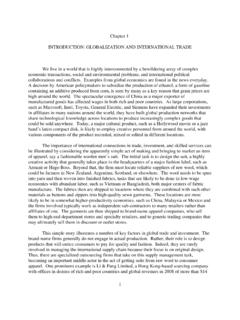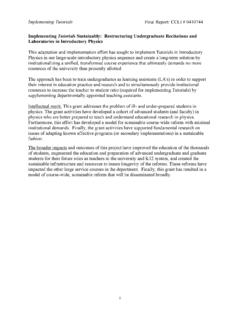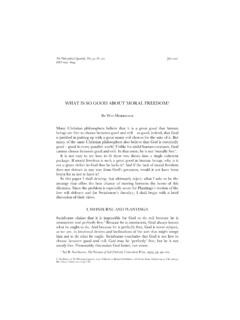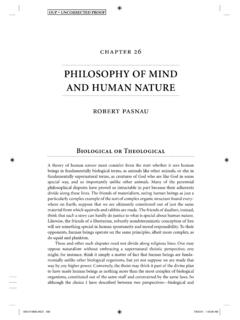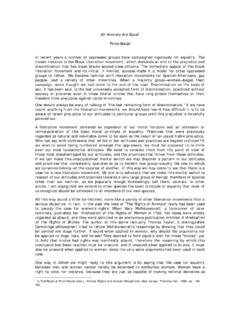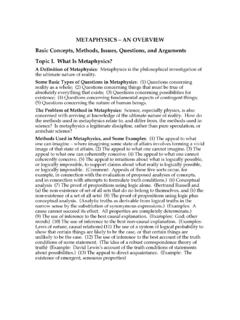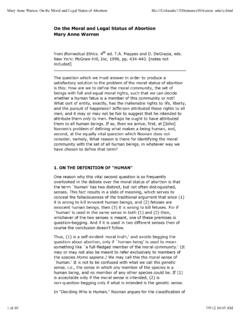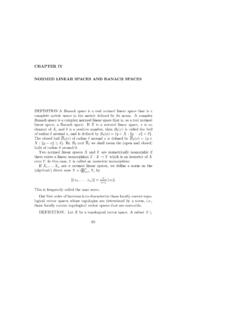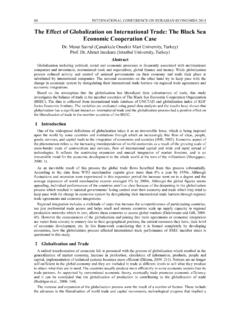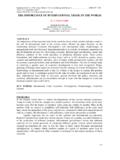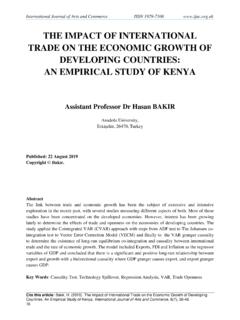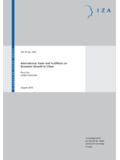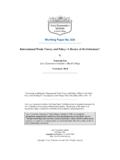Transcription of INTRODUCTION: GLOBALIZATION AND INTERNATIONAL …
1 1 Chapter 1 INTRODUCTION: GLOBALIZATION AND INTERNATIONAL TRADEWe live in a world that is highly interconnected by a bewildering array of complexeconomic transactions, social and environmental problems, and INTERNATIONAL politicalcollaborations and conflicts. Examples from global economics are found in the news everyday. A decision by American policymakers to subsidize the production of ethanol, a form of gasolinecontaining an additive produced from corn, is seen by many as a key reason that grain prices arehigh around the world. The spectacular emergence of China as a major exporter ofmanufactured goods has affected wages in both rich and poor countries. As large corporations,such as Microsoft, Intel, Toyota, General Electric, and Siemens have expanded their investmentsin affiliates in many nations around the world, they have built global production networks thatshare technological knowledge across locations to produce increasingly complex goods thatcould be sold anywhere.
2 Today, a major cultural product, such as a Hollywood movie or a jazzband s latest compact disk, is likely to employ creative personnel from around the world, withvarious components of the product recorded, mixed or edited in different importance of INTERNATIONAL connections in trade , investment, and skilled services canbe illustrated by considering the apparently simple act of making and bringing to market an itemof apparel, say a fashionable woolen men s suit. The initial task is to design the suit, a highlycreative activity that generally takes place in the headquarters of a major fashion label, such asArmani or Hugo Boss. Beyond that, the firm must locate reliable suppliers of raw wool, whichcould be farmers in New Zealand, Argentina, Scotland, or elsewhere. The wool needs to be spuninto yarn and then woven into finished fabrics, tasks that are likely to be done in low-wageeconomies with abundant labor, such as Vietnam or Bangladesh, both major centers of fabricmanufacture.
3 The fabrics then are shipped to locations where they are combined with such other materials as buttons and zippers into high-quality sewn garments. These locations are mostlikely to be in somewhat higher-productivity economies, such as China, Malaysia or Mexico andthe firms involved typically work as independent sub-contractors to many retailers rather thanaffiliates of one. The garments are then shipped to brand-name apparel companies, who sellthem to high-end department stores and specialty retailers, and to generic trading companies thatmay ultimately sell them in discount or outlet stores. This simple story illustrates a number of key factors in global trade and investment. Thebrand-name firms generally do not engage in actual production. Rather, their role is to designproducts that will entice consumers to pay for quality and fashion. Indeed, they are rarelyinvolved in managing the INTERNATIONAL supply chain because their focus is on original design. Thus, there are specialized outsourcing firms that take on this supply management task,becoming an important middle actor in the act of getting suits from raw wool to consumerapparel.
4 One prominent example is Li & Fung Limited, a Hong Kong-based sourcing companywith offices in dozens of rich and poor countries and global revenues in 2008 of more than $141 See Gereffi and Memedovic (2003) for a primer on global production chains in apparel,while the Li & Fung company is described Its business is to work with thousands of sub-contractors across the world in manyindustries to have products assembled according to the originating firms specifications. Assuch, it is an excellent example of a multinational enterprise, even if unfamiliar to mostAmericans, Canadians and Europeans. Finally, there are several INTERNATIONAL trade flowsdescribed in this example, with wool moving from New Zealand to Vietnam, yarn moving fromVietnam to Mexico, and garments being transported from Mexico to the United States andCanada for final purchase. This textbook explains the fundamental determinants and impacts of this extensiveinternational organization of economic activities into trade , investment, outsourcing, and theglobal use of knowledge.
5 To begin this journey, consider how modern-day GLOBALIZATION of GlobalizationThe concept of GLOBALIZATION has numerous definitions, depending on the subject matterbeing explained. To INTERNATIONAL economists it has a simple definition, albeit one with powerfulimplications. Specifically, GLOBALIZATION occurs when the markets of different countries becomemore integrated and interconnected through economic transactions that cross national borders. These transactions can be in real merchandise, various forms of services, financial instruments,investments in local production facilities by multinational firms (a process called foreign directinvestment, or FDI), temporary and permanent labor migration, and technological information. They can involve individuals, trade between unrelated firms, transactions within internationalenterprises, and governments. What drives these transactions and how they are organized isendlessly fascinating, and the subject of this is useful to distinguish among the sources of GLOBALIZATION , the channels through whichtransactions occur, and the effects such integration seems to have on national economies.
6 Consider first the sources: what causes economies to become more integrated over time? Economists generally focus on three major factors, all of which have been important in spurringmore interconnected global markets in the last 60 obvious first factor is that countries have chosen to become more integrated throughsuccessively reducing their restrictions on INTERNATIONAL trade in goods and services and barriersto foreign investment. Beginning in the late 1940s, a small number of richer countries beganjointly to bring down their taxes on imports, called tariffs, through negotiation and renegotiations2We discuss trade barriers in chapters 18-20 and the INTERNATIONAL institutions governingtrade and investment in chapters importance of transportation costs and other trade costs will be discussed in detail inChapter a treaty called the General Agreement on Tariffs and trade (GATT).2 This process continuedthrough nearly five decades until 1994 when the current World trade Organization (WTO) wasfounded.
7 Currently the WTO membership comprises nearly every country in the world and eachmember must commit to limits on its tariffs while engaging in periodic negotiations to reducetrade restrictions. The GATT and WTO also were instrumental in liberalizing variousquantitative barriers to trade , such as import quotas and favoritism in government procurementprograms. More recently, WTO member countries have begun opening their markets tointernational suppliers of particular services, such as transportation, retailing, insurance, andbanking. Even more, both developed and many developing nations have greatly liberalized theirrules under which INTERNATIONAL enterprises are permitted to invest in their markets. It is noweasy for firms to locate their affiliates in countries that offer the best combinations of labor skills,public infrastructure, natural resources, and other factors that encourage FDI. Indeed, where 30years ago many developing countries preferred to make it difficult for FDI to come into theirmarkets, or tried to control it through various requirements imposed on the multinational firms,now nations are more likely to offer various inducements and subsidies to attract such flows.
8 The reason is that FDI frequently brings with it new jobs and improved WTO is by no means the only forum through which trade and investment restrictionshave been reduced. Many countries chose to liberalize their barriers unilaterally, recognizingthat doing so could achieve significant economic efficiency gains and improve consumer welfareand prospects for growth. Others did so under pressure from INTERNATIONAL institutions, such asthe INTERNATIONAL Monetary Fund and the World Bank, which often attach their lending programsto economic liberalization and trade reforms. Yet another major force toward lower traderestrictions is the proliferation in the 1990s and 2000s of regional preferential trade accords, suchas the North American Free trade Agreement involving the United States, Canada and Mexico,and MERCOSUR, involving Brazil, Argentina, Paraguay and Uruguay. These agreementsgenerally eliminate tariffs on trade within the region and also require relaxation of specificinvestment second important factor is the remarkable reduction in certain transportation costs ininternational commerce since the There are many costs involved in getting productsfrom a factory in one country to customers in another.
9 There are the within-exporter surfacetransportation costs by railroad or truck to ocean port facilities or airports. These costs havefallen considerably in countries that invested in roads and other transport infrastructure. Similarly, the efficiency of the transit ports, whether by sea or air, matters considerably for4 See Hummels (2007) for an extensive review of ocean and air freight Chamber of Commerce Banking Commission, Rethinking trade Finance2009: an ICC Global Survey, Paris, March 31, costs. The increasing use of large containers for shipping massive quantities packedtightly has increased this efficiency and encouraged more trade by ocean vessel. Similarly, thepowerful jet engines on today s large cargo jets make it capable to ship considerable quantitiesof goods through the air, especially those products where rapid delivery is In addition to these physical factors, transport costs depend on the prices charged forfreight services by shipping companies and the premiums paid to insurance firms to cover lossesif goods are damaged or destroyed in transit.
10 It is interesting to note that the cost savings fromcontainerization have been considerably offset by limited competition and high charges in theshipping industry over the last few As a result, a far larger share of world trade nowtakes place via air freight than was the case 20 years ago, meaning in turn that the speed at whichgoods are traded has increased considerably. Shipping costs also depend on access to loans from banks, called trade credits, which areused to pay the short-term charges and then repaid after exporting concerns are paid for thegoods they send to importing firms. In the global credit crunch that emerged in 2008 and 2009,the volume of trade credits fell sharply, diminishing what was already a significant decline inforeign trade . For example, a report in March 2009 found that 47 percent of banks surveyed haddecreased the amount of letters of credit (short-term loans) for exports between the end of 2007and the end of 2008, with a marked increase in fees for originating such A rapid recoveryin trade finance is important to avoid a sustained slump in global merchandise trade .
